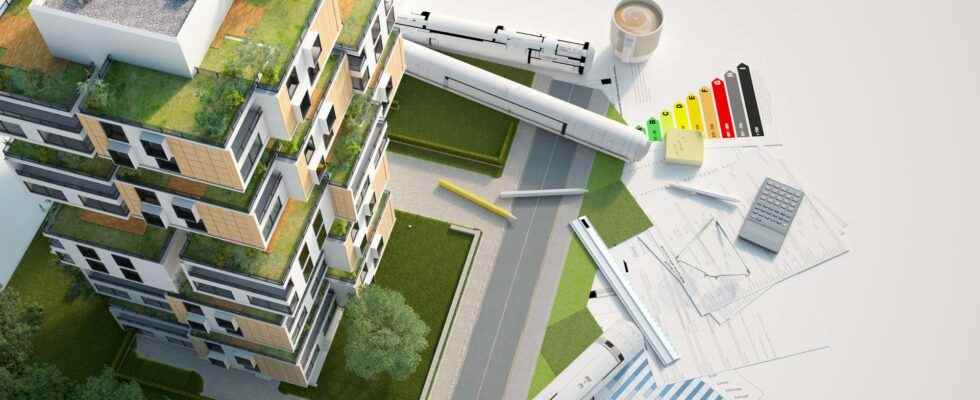Ecological issues are at the center of global concerns and represent the future of new constructions. Initially scheduled for January 1, 2021 by the ELAN law (Evolution of housing, development and digital technology) but postponed for a year due to the health crisis, the new environmental regulation RE2020 which replaces RT 2012 aims to control the carbon impact of buildings and their consumption significantly, right from the extraction of raw materials. Nexity was one of the first builders to take environmental criteria into account in the construction of its buildings while providing better quality housing.
You will also be interested
Aware early on of the impact carbon of the real estate sector in France, the Nexity group started making carbon balances on his buildings since 2013 and has been committed since 2016 alongside the association for the Development of Low Carbon Buildings which bears the BBCA (Low Carbon Building) label. In 2021 as in 2020, the group came first in the BBCA rankings with 44 BBCA-labeled operations carried out over the year.
New materials for better comfort
In concrete terms, this consists of guaranteeing a significant reduction in thecarbon footprint from construction to operation of the building over 50 years. These are low material usage consumption and sustainable as the drinklow-carbon concrete and biosourced materials while anticipating the management of waste and the recycling at the end of the life of the materials used. But it is also the guarantee of better insulation and better thermal comfort allowing savings ofenergy and charges.
Buildings facing the outdoors and nature
For a few years and even more since the health crisis, the French need to go out and demand privileged access to the outdoors and to nature. Builders like Nexity have understood this well and already offer housing geared towards green spaces accessible to 100% of occupants. We can thus find gardens to share, vegetable gardens, real natural spaces in the heart of cities with the constant objective of maintaining an approach where the biodiversity will be at the center of each project.
Controlled costs
The main challenge of these new standards is to be able to offer increasingly responsible and environmentally friendly housing without having an impact on construction costs. At Nexity, housing is sustainable, labeled low carbon but is not more expensive! Many accommodations are offered with reduced VAT, prices are controlled while being part of an approach to preserving the environment: biodiversitypresence of green spaces or vegetated100% of occupants have access to a “natural” space within the residence, and low-carbon construction methods: low-carbon concrete, wood, biosourced materials, quality ofair interior.
With Nexity, it is possible to buy more sustainable housing in your city.
Promotional offer “The real estate kitty”, from January 31 to March 31, 2022:
- Nexity doubles your contribution up to €6,000* with the Property Kitty.
Article produced in partnership with Nexity
What you must remember
Interested in what you just read?
